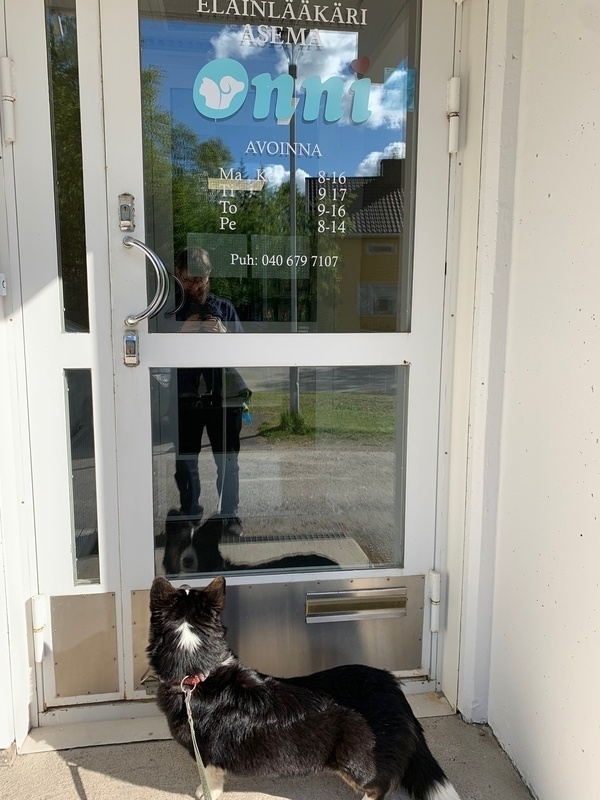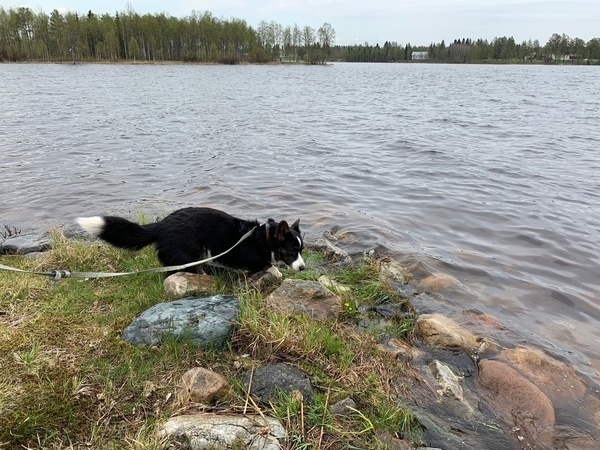DailyDogo 217 🐶

DailyDogo 217 🐶

DailyDogo 216 🐶

I recently bought new hardware for my personal use: An M1 MacBook Air and an 11” iPad Pro. My thoughts after the keynote:
Since the iPad Pro was supposed to be my main machine - not least because I wanted to see if that is possible and fun - I’m even more excited to double down on that. Yeah, I just bought the older MacBook Air, but I bought it because I assume that the light coding I’m doing in my free time and the heavier reading/writing/note taking/processing workflow I have, will lead me to use a machine that can run a less walled in OS with multitasking capabilities. We’ll see.
I wonder if I would have picked a beefier M2 Air over my two machine solution, but I’m also happy I got both devices. We live in a time of exciting technology in which we can pick the right digital tool for the job at hand and I’m happy that I can experience this exciting future.
In any case: My new hardware - I’m still waiting on my new Air - is/is going to be an amazing upgrade to my technological status quo. My personal laptop has been a 13-inch Mac Pro from 2013. And although that computer is still working (I just upgraded it to Monterey this morning!), it was time to upgrade. I’m really looking forward to leaving the sluggish, syrupy Mac experience behind.
DailyDogo 215 🐶

DailyDogo 214 🐶

DailyDogo 213 🐶

Setting up code-server again, because the iPad pro is my main personal machine. Last time it took me about a weekend to do so. It seems this time it will too…
DailyDogo 212 🐶

I think notifications are a rich vein for thinking about my setup, because it requires me to be clear about my intentions as regards to what I want to be notified about and where (and how and when).
A notification is a way to let me know that something has happened, will happen, is available. It is an event that can interact with me and potentially makes me do things. It’s a trigger (or cue).
Notifications can be desirable, overwhelming, unhelpful or outright spam. They are not inherently good or bad, but they are not a neutral thing in the world either: They make a difference.
Judging the usefulness of a notification is a involved process. The complexity of getting notifications right increases when realizing that you have to set them up beforehand, which means you have to expect the future.
Missing something means that a change of state in my world passed me by. Notification, on or not: If I missed it, the knowledge of having missed it implies that I now know that my world has changed (it) and I noticed afterwards. For things I don’t want to miss, I am interested in the changed state of affairs. But this doesn’t mean that I need to know about it now.
As compared to the things I don’t want to miss, here I’m more interested in the change of state: Something became available. A window of obligation/opportunity opened (or is about to close). Something was like this now it’s like that. Depending on the change, I might be interested in it forever or only for a limited period. In either case, time sensitivity itself is not the same as a change of state. It’s another property that alters this one.
Time sensitivity doesn’t mean any change of state needs to be known now. Sometimes it needs to be known depending on a location or on a certain date and time. “Now” is one, but not the only possibility. The reasons for a notification being time sensitive can be manifold in practice. Abstractly speaking, it is a question of priority and urgency - which are also not the same thing.
Whilst priority is trying to rank items by importance (which itself is a relative measure of impactfulness of the thing in question) to my world, urgency re-ranks those items according to currently open windows of opportunity and/or obligation.
Not only is it hard to keep all these distinctions in mind when I’m trying to predict my future, I’m also prone to getting it wrong, because my world is not made of numbers. Parts of my world aren’t measurable, some parts are not even comparable. Still other parts might not even be identifiable as parts!
And if this wasn’t making it difficult enough, this is surely not even close to a complete description of the problem space and none of this is available to me objectively, either. So what to do?
I’m an Apple user and have an iPhone, a work Mac, a personal Mac and an iPad. For me, it was important to understand that while focus modes can be shared across devices, the per-app notification settings are not.
Which makes sense, since not every app is available, let alone installed on every device.
Some notification specific settings are adjusted within the app itself, while others are adjusted through the settings of the os.
By disabling all notifications (individually), I am making sure that noise doesn’t even reach me. The default answer to any new app asking for permission to push notifications to me is “No”.
Same goes for badges, space on my home screen, or an app even getting installed. By radically reducing the apps that I have to manage, I reduce the problem a lot, by following this principled approach.
I knew some apps needed some way to inform me. And although my analysis above was important to get a feel for the difficulty of the problem, an 80% solution for 20% of effort may be good enough in practice. So I try that first for any app that actually really needs to inform me.
The harder part of this heuristic is figuring out what the least distracting thing is. I find a badge count of the right measure to be pretty good. But sometimes, actual notifications on one or more devices might be the obvious choice.
If something is only noise to me, it’s not worth getting informed about. Remove, simplify.
Before even getting into things like focus modes, I make sure my baseline of notifications has a high average of usefulness. This is hard to measure. A good quick test is maybe if notification center is a useful place to me, or not. I tinker with the baseline before I’m even introducing new focus modes (which add extra complexity).
I currently have the following focus modes:
“Sleep” - for the night
“Work” - for working
“Do Not Disturb” - for when I need to focus or can not be disturbed (except in extraordinary circumstances).
DailyDogo 211 🐶

DailyDogo 210 🐶

DailyDogo 209 🐶

DailyDogo 208 🐶

DailyDogo 207 🐶

I recently published a post about my microcasts and I‘m now writing this to tell you I’m going to microcast less. Less frequent and less scheduled. This is even weirder because I just created an intricate shortcut that automatically publishes a post with the right episode title and number without having to look up any of those details, which streamlined the entire process a lot.
But I have noticed that I‘m not as much in the mood at the moment to record my thoughts in this way. The early riser project, for example, was a great McGuffin to get me out of bed, but since I have changed my approach to waking up, it has become less important to me. I don‘t want to record these little episodes for the ramblings alone.
Being a big fan of podcasts like Back To Work and Cortex, I thought I could do a microcast about my work and how I approach it, but I have noticed that I would like to write about these things, not only talk about them extemporaenously. LeadDev is also the microcast for which the ratio of recorded/published episodes is the worst: I take this as an indicator of my wanting to express myself more carefully than I can while walking the dog and having to observe the environment.
À propos the dog: I created my first microcast, the PuppyCast, because I wanted to have a record of the challenges and joys of raising a puppy. I wanted to look (DailyDoogo, which I will not abandon, btw.) and listen back to this important time in my life. But I think that this project has run its course: I don‘t feel the need to publish this every week anymore. It‘s not like nothing changes or that there is nothing to report dog-wise, but it all comes down to the need to simplify and de-schedule my life. And I have episodes for the first six months, which seems like a good place to stop.
Seasons change. And this is how I feel about my microcasting: Right now I‘d much rather write than talk. Looking at my blog I mostly see noise that was produced hastily to satisfy a self-imposed schedule. I will let this stuff go, for now.
DailyDogo 206 🐶

Going too late to sleep in absolute time.
DailyDogo 205 🐶

Rhythms and exceptions.
DailyDogo 204 🐶

Late to bed, but an exciting thing waiting for me on my free day means: Less sleep, because I can’t wait to play around with my new iPad. 😅
DailyDogo 203 🐶


About being mindful and not doing meditation.
DailyDogo 202 🐶

Waking up by alarm clock.